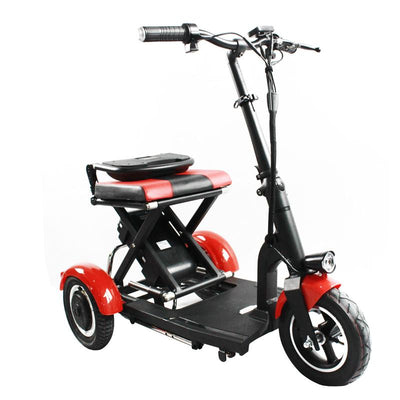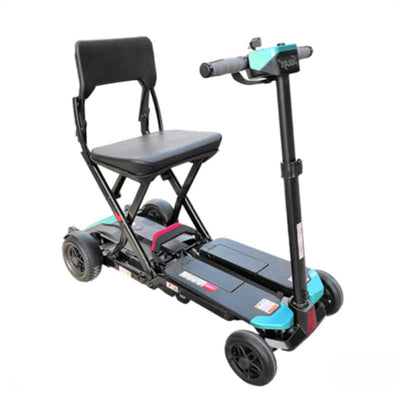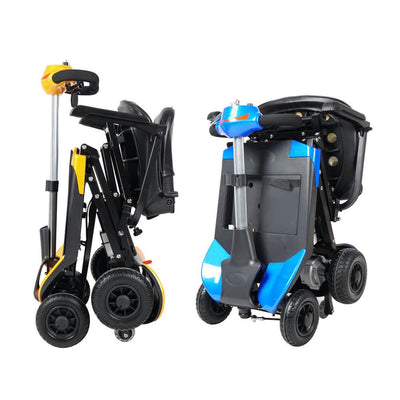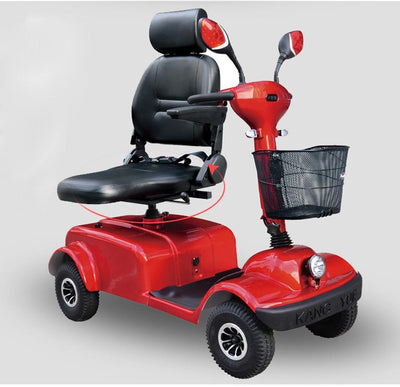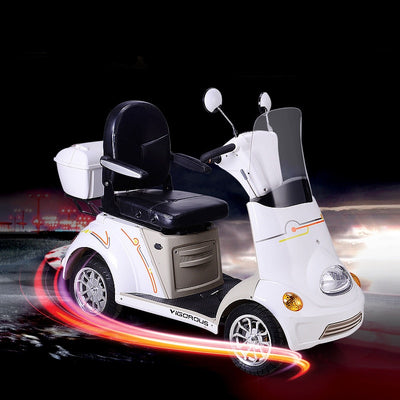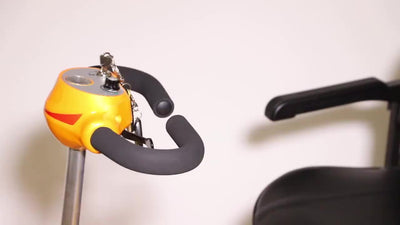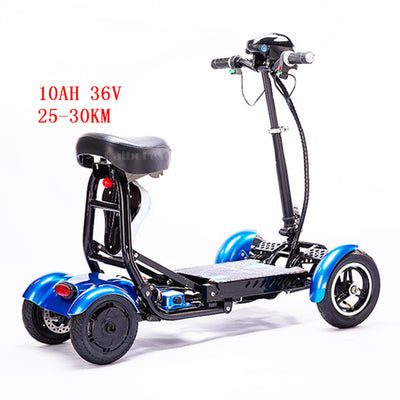How to Operate a Mobility Scooter
Posted by Tom Lee on
According to the Americans with Disabilities Act, individuals with disabilities use a variety of mobility devices such as walkers, canes, crutches, braces, or mobility device technology like power wheelchairs or electric scooters.
Mobility scooters can improve the quality of life for young adults and seniors, provide alternative mobility options, and make it easier to get around. With guidance and lessons on how to operate a mobility scooter, seniors and young adults with disabilities or mobility limitations can expect to ride with independence and ease.
Mobility scooters are designed with three or four wheels that are powered by an electric motor. They provide users with the ability to easily navigate and maneuver in both indoor and outdoor capacities. The scooters are equipped with a polished backrest, leg room, storage compartment, among other features. They are also able to quickly disassemble for future use or for traveling long distances.
It is important to always ask questions and read the manual when purchasing either a used or new motorized scooter from a manufacturer or seller. Proper usage will help you avoid common mistakes as well as potential accidents. Inspect your motorized scooter upon first purchase and do a thorough examination to check for any potential or hazardous manufacturing defects that could put you at risk. Check to see if it is also partially or fully covered by your insurance.
Why Learn How to Drive a Medical Scooter?
Safety comes first, which is why it’s important to know the features of the mobility device you’re purchasing, the level of power it is equipped with, as well as safety features such as emergency brakes, spare wheels, battery, and LED light in the event of an emergency.
Protect yourself from possible accidents, liability, or dangerous habits like distracted driving.
Some of the common risks associated with driving a medical scooter without proper training are head and neck injuries, spinal cord injuries, among various other life-threatening injuries.

Depending on various situations, different parties (the driver of the motorized scooter) or the driver of a vehicle may be liable for injuries sustained in a collision or accident by either parties.
With the increased demand for motorized devices to help those with mobility limitations, it is no surprise that mobility scooter-related accidents are much more rampant than in the past.
According to a report by Clinical Medical Reviews and Case Reports titled, “Mobility Scooter Accidents - Need for Preventative Action,” the spike in the number of seniors is cause for a demand in providing alternative motorized scooters for various medical conditions to aid in mobility.
The report states that in the U.S., approximately 1.7 million people use mobility scooters or wheelchairs for mobility assistance due to a mobility limitation. The report also notes that the elderly population is at high risk for traumatic brain injuries as a result of driving or accidental falls.

Unfortunately, mobility scooter-related accidents are on the rise due to a variety of factors such as speed, lack of training, or how well one can cautiously and successfully drive a mobility medical scooter.
Wheelchair & Scooter Repair reported the tragic story of a two-year-old boy who was run over by an elderly mobility scooter driver. There have also been cases where mobility scooter drivers do not pay attention to road signs or traffic regulations, or vice versa, where a pedestrian or driver of a vehicle does not yield to a mobility scooter.
Either way, as an owner of a mobility scooter or someone who knows of someone who has a mobility device, it is imperative to know your rights as well as the repercussions or potential risks or liability involved. If involved in a serious accident, one is advised to report the accident and look into a personal injury lawyer.
In some cases, local law enforcement in Norfolk, Virgina, took action by responding to the concern of injuries and accidents related to motorized scooters, pedestrians, and drivers. For instance, Norfolk, Virginia Police started offering a training class for scooter drivers to better inform and equip riders with the tools they need to protect themselves and others on the road. Driving a mobility scooter differs greatly from a car, and it is important to understand the limitations or risks that might be posed.
How to Operate a Mobility Scooter and Driving Courses
Motorized scooter training can be crucial before you decide to operate a mobility scooter for the first time. Consider enrolling in driving courses offered by your community or consult occupational therapists who can help you navigate the features on your wheelchair or power mobility device.

A recent report titled, “Motorized mobility scooters – The use of training/intervention and technology for improving driving skills in aging adults - A Mini-Review,” highlights the many benefits to using motorized mobility scooters as well as some of the risks associated with improper use which may result in death or injuries.
The report analyzes and mentions that driving skills and performance might be improved from simple community-based training and intervention methods, as well as new technology to improve the maintenance of a motorized mobility scooter and provide continued assistance to the user to improve driving performance and safety.
Some organizations like the Department for Transport has set aside funds for mobility driving centers to encourage more intervention and mobility scooter driving training courses that benefit the elderly and individuals with disabilities.
For instance, the organization helps people receive intervention and wheelchair and scooter assessments from trained occupational therapists, according to Access & Mobility Professional.
The American Disabilities Act emphasizes the need for awareness of mobility devices as well as staff training to make sure that individuals with disabilities are not turned away.
“Training should include instruction on the types of OPDMDs that can be accommodated, the rules for obtaining credible assurance that the device is being used because of a disability, and the rules for operation of the devices within the facility,” the ADA adds.
Main rules for driving motorized scooters
With mobility scooter-related accidents on the rise, it is important to yield to pedestrians and also follow the same rules as drivers to avoid injuries and accidents.
Although a wheelchair or scooter is not required to have a license plate or registration, it is still important to understand and obey the rules of the road. (You should check in with your local DMV to figure out if your vehicle is exempt from a license plate or registration).
Rules may vary from state to state, so check in with your county website for more detailed information about where you can drive as well as the mph. According to California’s law for motorized scooters, mobility scooter drivers seniors or individuals with a disability can drive up to 30 mph on the road.

It is recommended that you do not drive your motorized scooter on a busy road or road intended for bikers, however.
The American Disability Act also has a list of requirements for “other power-driven mobility devices” below:
- requiring the user to operate the device at the speed of pedestrian traffic;
- identifying specific locations, terms, or circumstances (if any) where the devices cannot be accommodated;
- setting out instructions for going through security screening machines if the device contains technology that could be harmed by the machine; and
- specifying whether or not storage is available for the device when it is not being used.
The American Disabilities Act also states that “people with disabilities have the right to choose whatever mobility device best suits their needs,” which means that you can decide whether a wheelchair or a power wheelchair best accommodates your mobility needs.
Once you’ve made your mobility device purchase and have read through the manual on how to operate your motorized medical scooter, you can feel confident and at ease that you made the right decision.
- Tags: mobility scooter

